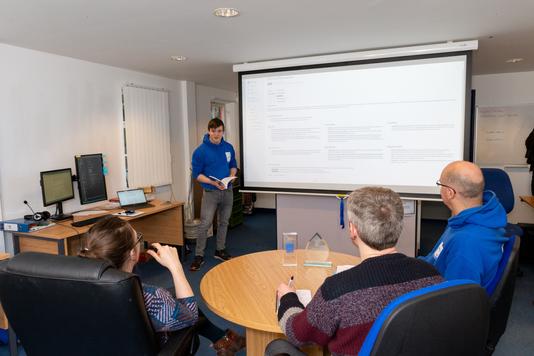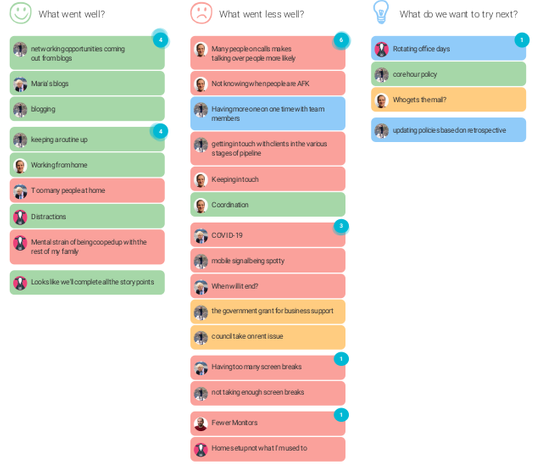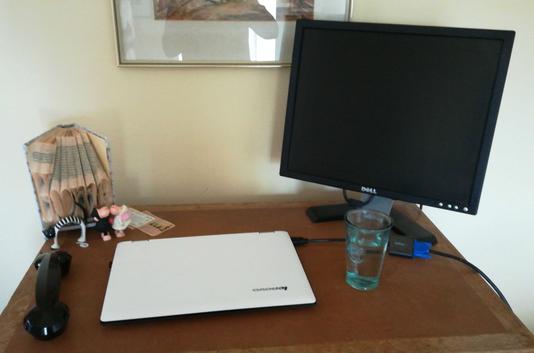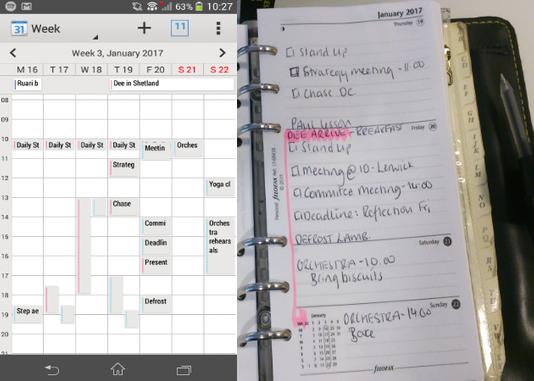
The Mesomorphic Guide to Holding Your Own Retrospective
- By Maria Bell
- 23 March
We showed the value of a retrospective during our last blog. Now it's time to find out how to have one of your own!
Task management is key for any organisation regardless of size and location. In this blog I will walk you through my own process for task management and look at how a Kanban board help keep tasks on track.

Part of the Remote Working series:
Part 1: The Mesomorphic Guide to Working From Home
Part 2: Communication When Working Remotely
Part 3: You Can With a Kanban
Part 4: Looking Back Over Our First Week of Having a Fully Remote Team
Part 5: The Mesomorphic Guide to Holding Your Own Retrospective
I’ve been hearing from quite a few people this week who are adapting to working from home, and task management has been frequently mentioned. I understand this challenge very well! My role is incredibly varied, and as such I need to make sure that each part of my role receives attention. As a result I have a very healthy looking To do list which has many different areas which require focus. This is where we see the benefits of company stand ups. I often end up adding tasks to my list which hadn’t sprung to mind during my initial plan for the day.
To keep on top of this, I’ll walk you through a technique which I find works for me. Before we explore that though, the key thing here is to find a process that works for you. Think about how you learn. Are you someone who finds colours a useful way to highlight important tasks? Or perhaps you prefer list writing? I’ve even met some people who record their To do list and then listen back to it to help them stay on track. Your To do list needs to fit in with your way of thinking, so now is a good time to grab a cuppa and think about what works for you.
You’d think, working in a software development company I’d use software to help me out with this, right? Wrong. After some trial and error, I have found that my diary, highlighters and my growing collection of paperclips works for me.

Before I start my working day, I start off with writing my To do list in my diary with a tick box for each. As a general rule, I initially limit myself to 10 tasks, as chances are that as my day progresses more items will be added to it. At this point, I’m quite mindful about priorities and if a task comes to mind which can be done at a later time, then I’ll add it onto a different page in my diary. When the task is completed, I tick it off.
The stars represent activities which happen outside of the To do list, for example key emails, phone calls, key points made in conversations which need revisiting and anything that really falls into the category of “other”. More often than not, these starred points are converted into tick boxes in a new list.
At the end of the day, if there is a task box which has remained unticked then it is highlighted in yellow (Our Mesomorphic pens have a yellow highlighter at the end, which is incredibly handy!)

The following day, I’ll review the highlighted boxes first and see if any of those need to be done before my current list. If it’s something important it gets done straight away. If not, then I’ll complete the new To do list for the day and focus on the yellow boxes later. I also have Friday mornings blocked off as “Yellow Box time” where I complete any outstanding tasks.
On a side note - I find the stars a particularly helpful tool, as I sometimes have one of those days where I have my To do list and I just don’t get round To do-ing them for one reason or another. By capturing the activities that happen outside of my To do list, it allows me to focus on the things I have achieved rather than those I haven’t.

In our [communications blog](https://www.mesomorphic.co.uk/blog/2020/03/17/working-from-home-02 /), we mentioned Trello as a good tool for visibility. The reason for this is because it uses a Kanban board.
A Kanban board shows a list of tasks in the various stages of a workflow. This workflow could be as simple as three columns titled To do, In Progress and Done, or it can include more steps depending on your processes.
There are numerous benefits to using the Kanban board, and here are a few:
So whether your Kanban board is physical, using post-it notes or virtual, using one of the many tools online there are many benefits that it will bring to teams no matter what their size and location. If you are keen to implement this idea, or want to know where to start, please get in touch at contact@mesomorphic.co.uk and we’ll be happy to offer some advice.

We showed the value of a retrospective during our last blog. Now it's time to find out how to have one of your own!

We're always looking at ways we can continuously improve our processes, so today we had a retrospective which focused on how this week has gone.

Keeping communication lines open can be an issue whether working remotely or in the same building. This blog looks at some of the tools availiable and how we achieve it in Mesomorphic.

Working from home is not uncommon in the IT industry, so here is a quick start guide to get started.

I'm going to be honest. Originally I had started writing this blog purely to discuss the benefits of using software in a business environment.